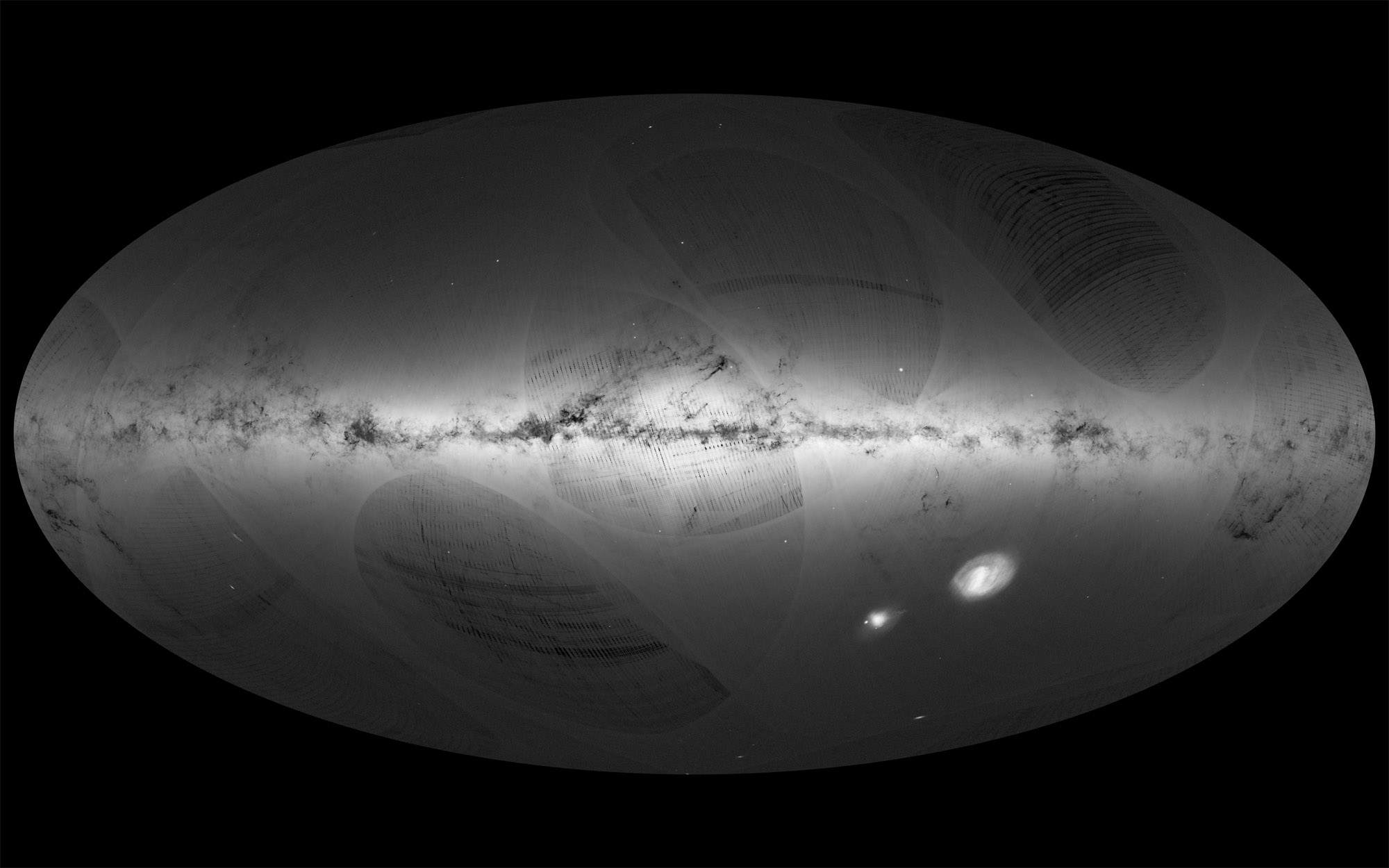1 Billion Stars Mapped! Most Detailed Catalog of Milky Way Is Revealed

The most detailed 3D map yet of a billion stars in the Milky Way galaxy was released today (Sept. 14), along with a sneak peek at brand-new data on millions of stars collected by the European Space Agency's Gaia spacecraft.
Gaia has been scanning the sky to create a catalog of more than a billion stars in and around the Milky Way since 2014. Today's first data release includes precise positions and brightness of 1.142 billion stars, plus distances and motions of more than 2 million stars. ESA scientists used the observations to create this stunning fly-through of a packed star cluster.
Just 14 months into its 5-year mission, Gaia's data release is only the beginning of loads of new information about our galaxy that Gaia is expected to produce. The mission will ultimately build the most comprehensive, detailed and accurate star catalog of all time. [Photos: Gaia Spacecraft Is Mapping Milky Way Galaxy]
"Gaia is at the forefront of astrometry, charting the sky at precisions that have never been achieved before," ESA's Science Director Alvaro Giménez said in a statement.
Data from Gaia will be used not just for constructing a gigantic and unprecedented 3D map of the Milky Way, but it will also inspire new research. For example, knowing the stars' positions, movements and other physical qualities could help researchers study the structure and history of the Milky Way galaxy.
In the same statement, Anthony Brown of Leiden University in the Netherlands said Gaia data will allow researchers "to investigate our place in the Universe, from our local neighborhood, the Solar System, to Galactic and even grander, cosmological scales." Brown is chairman of the Gaia consortium.
While this may be the biggest and most ambitious galaxy-mapping endeavor yet, the vast amount of stars observed in this mission will represent only about 1 percent of all of the stars in the Milky Way galaxy.
Breaking space news, the latest updates on rocket launches, skywatching events and more!
Email Hanneke Weitering at hweitering@space.com or follow her @hannekescience. Follow us @Spacedotcom, Facebook and Google+. Original article on Space.com.
Join our Space Forums to keep talking space on the latest missions, night sky and more! And if you have a news tip, correction or comment, let us know at: community@space.com.

Hanneke Weitering is a multimedia journalist in the Pacific Northwest reporting on the future of aviation at FutureFlight.aero and Aviation International News and was previously the Editor for Spaceflight and Astronomy news here at Space.com. As an editor with over 10 years of experience in science journalism she has previously written for Scholastic Classroom Magazines, MedPage Today and The Joint Institute for Computational Sciences at Oak Ridge National Laboratory. After studying physics at the University of Tennessee in her hometown of Knoxville, she earned her graduate degree in Science, Health and Environmental Reporting (SHERP) from New York University. Hanneke joined the Space.com team in 2016 as a staff writer and producer, covering topics including spaceflight and astronomy. She currently lives in Seattle, home of the Space Needle, with her cat and two snakes. In her spare time, Hanneke enjoys exploring the Rocky Mountains, basking in nature and looking for dark skies to gaze at the cosmos.

